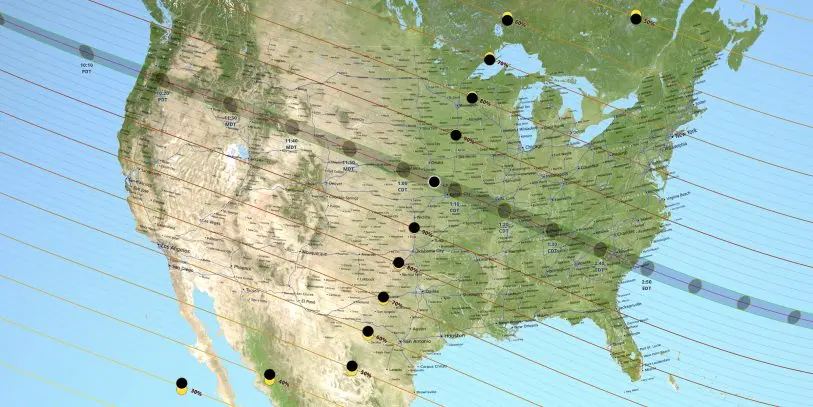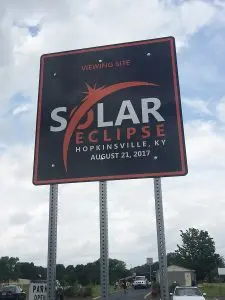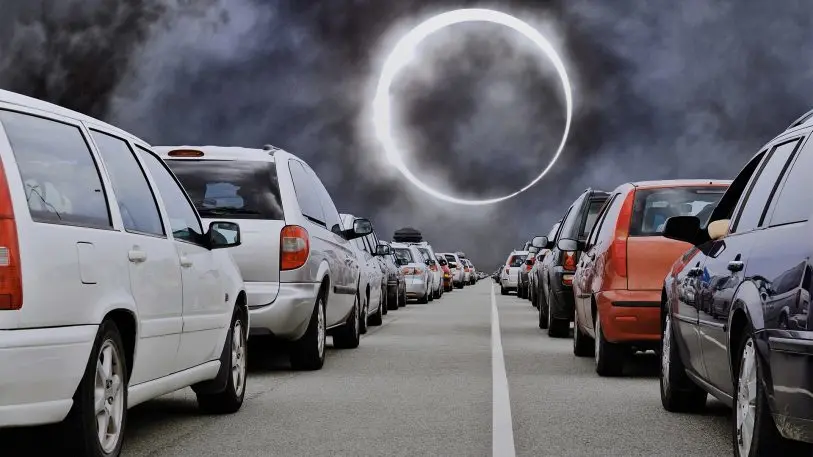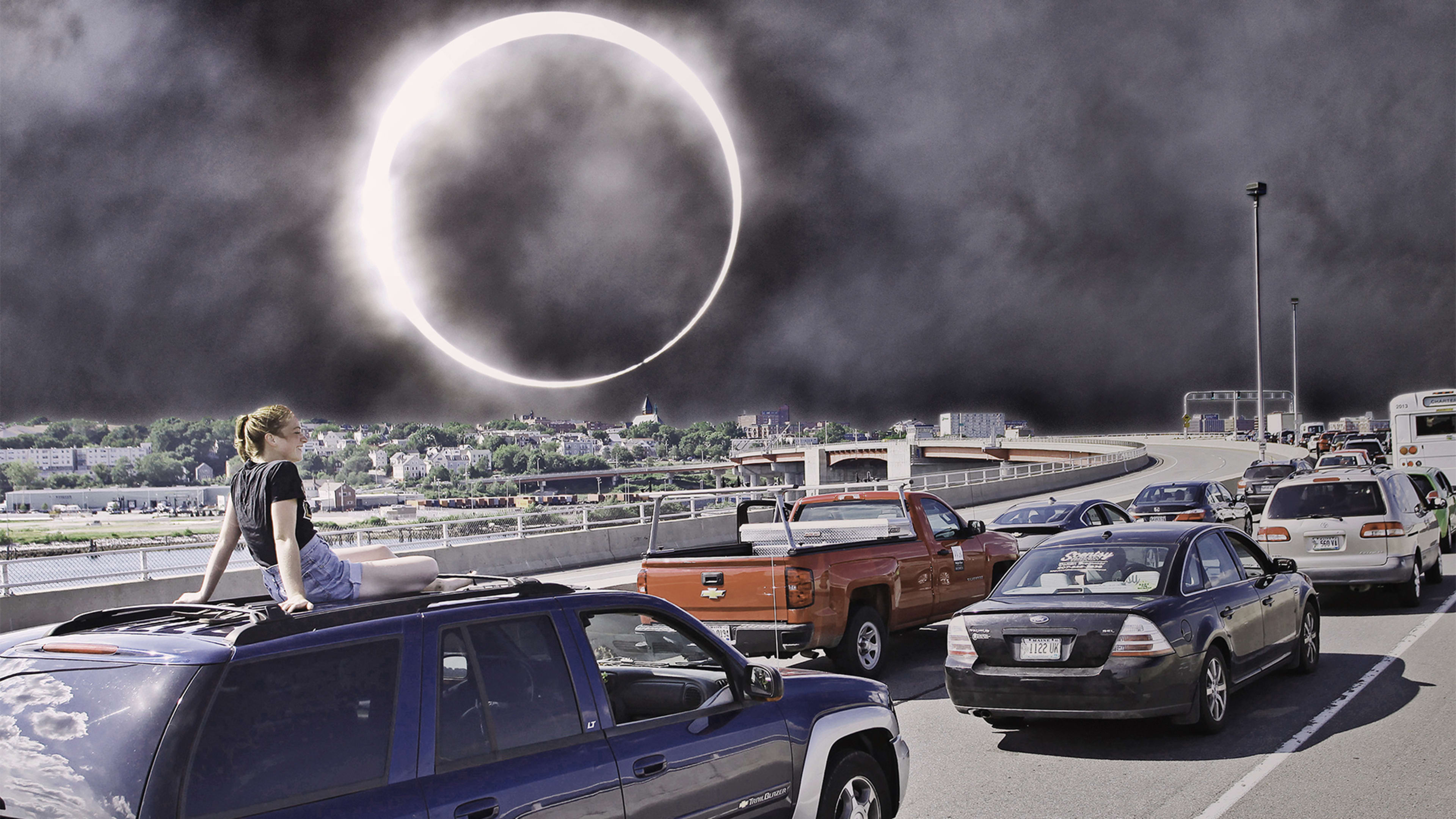Every port-a-potty in the state of Oregon was reserved months ago. In a small town in Kentucky, workers are planning to disable the automated street lights that turn on in the dark. Officials in Wyoming–and 13 other states–are readying for the worst-imaginable traffic jams.
All of this for the sake of two minutes on a summer Monday, when the moon will block out the sun and the sky will darken.
Public safety officials, festival planners, and astronomy enthusiasts across the country are amping up for what’s expected to be the most-viewed total solar eclipse in history on August 21.

“It’s essentially like hosting the Super Bowl without having to build a stadium,” says Brooke Jung, the full-time eclipse marketing and events consultant in Hopkinsville, Kentucky, a town of 31,000 people located 75 miles northwest of Nashville that is expecting among the most visitors–up to 100,000 eclipse enthusiasts from 37 states and 14 countries (and the Vatican)–to flood its gates for the big event.


“We think that BEST place is here with us in #Eclipseville at the Point of Greatest Eclipse!”–its Hopkinsville Eclipse Twitter account proudly stated in May in response to a social media user’s query.
Other locations might beg to differ. Carbondale, Illinois touts that it is nearest to the point of the “longest eclipse,” at two minutes and 42 seconds, and Nashville notes it’s the largest city on the path of the “once-in-a-lifetime celestial event.” Like to be close to the sky? Casper, Wyoming, where AstroCon will be held that weekend, talks up its high elevation and great weather, and people will flood the Great Smoky Mountains for an elevated view of the moon’s shadow rushing across the valley below. If you prefer flat corn fields, check out Nebraska’s “broad horizons.” Science nerds are going to Oregon to attend Atlas Obscura’s celebration of this “rare astronomical event on a gorgeous, secluded farm,” and minor league baseball fans will head to the stadium of the Volacnoes, Salem, Oregon’s minor league baseball team, for what is apparently the first-ever “eclipse delay” in this history of the sport.
What if you want to attend the “most exclusive” eclipse party? If you have $80,000 handy, there’s Big Mountain Heli Tours, which has obtained a first-ever permit from the Confederated Tribes of Warm Springs to land six guest to camp near the summit of Oregon’s second tallest peak.
Clearly, any definition of the “best” is ultimately unpredictable and subjective. It will be dependent on local weather conditions that day, as well as factors like good road networks, elevation, the beauty of the surrounding landscape, crowds, and other activities available. In some states, nearby forest fires can be a last-minute visibility issue in summer as well.
Eclipse expert Jay Anderson, who has analyzed historical weather patterns along the totality path, says places in central Oregon, southern Idaho, central Wyoming, and western Nebraska have the best chance of cloud-free skies. Proximity to good highways is a plus, allowing go-getters to drive elsewhere to avoid last-minute cloud cover. In fact, the Federal Highway Administration sent out guidelines to towns near the path of the eclipse to help them prepare for the massive traffic anticipated around the event, suggesting postponing planned construction and partnering with Waze to offer alternate routes.
“Without doubt, some areas expected to be sunny will be cloudy and some areas with a cloudy history will be sunny,” Anderson said in an email, while scouting locations for the 2019 eclipse that will be visible in Peru. (He once learned disappointment the hard way in South Africa, when last-minute clouds, a river, and an international border blocked his path to a great eclipse view.)

Dallas, Oregon Mayor Brian Dalton proudly noted his town made a newspaper’s list of prime viewing spots in Oregon, which is the state expected to attract the most out-of-state visitors overall, with its great weather and host of festivals, like SolarFest, the Moonshadow Festival, and what looks like the Burning Man of the northwest.
“We’re the first [state] to see the eclipse. Our weather is better than any other place, and people seem to like the idea of Oregon,” said Dalton. (Does any of this beat Ozzy Osborne’s Moonstock eclipse festival in Carterville, Illinois? Hard to say).
Others are keeping it low-key. Jackson, Wyoming hasn’t spent time or money promoting itself at all, but this is more of a humblebrag: Jackson, near Grand Teton National Park, is already at its peak tourist capacity in August. (Anderson himself will be watching from there: “It’s a spectacular venue, though not quite the best for weather,” he said.)
“We’re kind of a unique case because we already get huge numbers of people here every summer,” said Wyoming Stargazing founder Samuel Singer, who has attended planning meetings and is hosting a fundraiser that weekend for building a permanent astronomical observatory in town.
Anderson calls the hoopla and marketing around the eclipse a “somewhat pleasant surprise.” He remembers that the last total solar eclipse to touch the contiguous U.S. in 1979 was plagued by “irrational” fears that seeing it would blind people, he said (Note: It is important to wear safety glasses).
“Because the eclipse is ‘monetized,’ the inane comments about viewing safety and only watching on TV have gone by the board,” he says. “To be blunt, money has overcome fear.”
Dalton says the internet has helped. “We talk about something called FOMO–fear of missing out. I see that as a big factor.” What is he most nervous about for the big day? “Quite frankly, what if we gave a party and nobody came?”
Recognize your brand’s excellence by applying to this year’s Brands That Matter Awards before the early-rate deadline, May 3.
